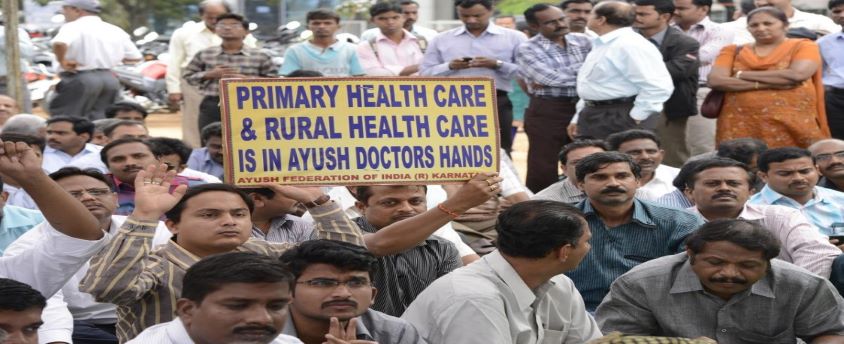The hardships of a career in Ayurvedic Practice
07, Mar 2023

Prelims level : Governance
Mains level : GS-II Governance - Issues Relating to Development & Management of Social Sector/Services-Health
Why in News?
- Ayurveda is a traditional system of medicine that originated in India thousands of years ago. It is based on the principles of balancing the body, mind, and spirit to achieve optimal health and wellness.
- While it can be a rewarding career for those who are passionate about natural health and healing, it can also present its share of challenges and hardships.
- Despite the publicity campaigns to promote Ayurveda, Yoga, Unani, Siddha and Homeopathy (AYUSH), there is a trust-deficit in these systems.
Challenges:
- There is widespread scepticism in the public mind about the soundness of Ayurvedic theories and the fruitfulness of its practices. The Ayurveda establishment has failed to keep pace with the intellectual and scientific advances of the times as treatments are made to escape experimental scrutiny because of their supposed rootedness in such theories.
- Thus, a major reason for the trust-deficit in Ayurveda is its diminished evidence-based quality.
- That Ayurveda treatments are slow to heal as Ayurveda on patient benefit and not just on instant patient gratification. Sustainability of treatments requires a gradual transition from illness to wellness.
- An Ayurveda practitioner has to depend on himself to discover treatments and approaches that actually work.
- The process involves a lot of trial and error with patients and predictably leads to an erosion of the practitioner’s reputation.
- Ayurveda can be used safely and efficiently only in about 60%-70% of primary-care illnesses. Ayurveda practitioners would necessitate complementing Ayurveda with modern medicine.
- However, most States prohibit the practice of modern medicine by Ayurveda graduates.
- Ayurveda is still not widely recognized as a mainstream medical practice in many parts of the world.
- Additionally, the lack of standardisation in training and education can make it difficult for practitioners to be recognized and respected.
- In many countries, Ayurvedic practice is not regulated by the government, which can lead to unscrupulous practitioners offering substandard or even dangerous treatments.
- With the rise of natural and alternative medicine, there is an increasing number of Ayurvedic practitioners, which can lead to stiff competition in the market
Way Forward:
- Ayurveda graduates can contribute enormously towards rejuvenation of primary care in India if trained properly. Government must promote a vigorous evidence-based appraisal of Ayurvedic theories and practices in order to sift the usable from the obsolete.
- Government must invest in providing high-quality education and training from reputable institutions which meet the standards set by it.Practitioners must obtain the necessary licences and certifications to practise Ayurveda legally.
- They can Join professional organisations such as the National Ayurvedic Medical Association (NAMA) to stay up-to-date on industry developments and standards.
- The government can provide financial support and incentives to Ayurvedic businesses, including funding for research and development, and tax incentives for Ayurvedic products.The government can launch public awareness campaigns to educate people about the benefits of Ayurveda and encourage them to adopt Ayurvedic practices as a part of their daily lives.
- The government can also collaborate with other countries to promote Ayurveda globally. This can include joint research studies, training programs, and exchange programs for Ayurvedic practitioners.






